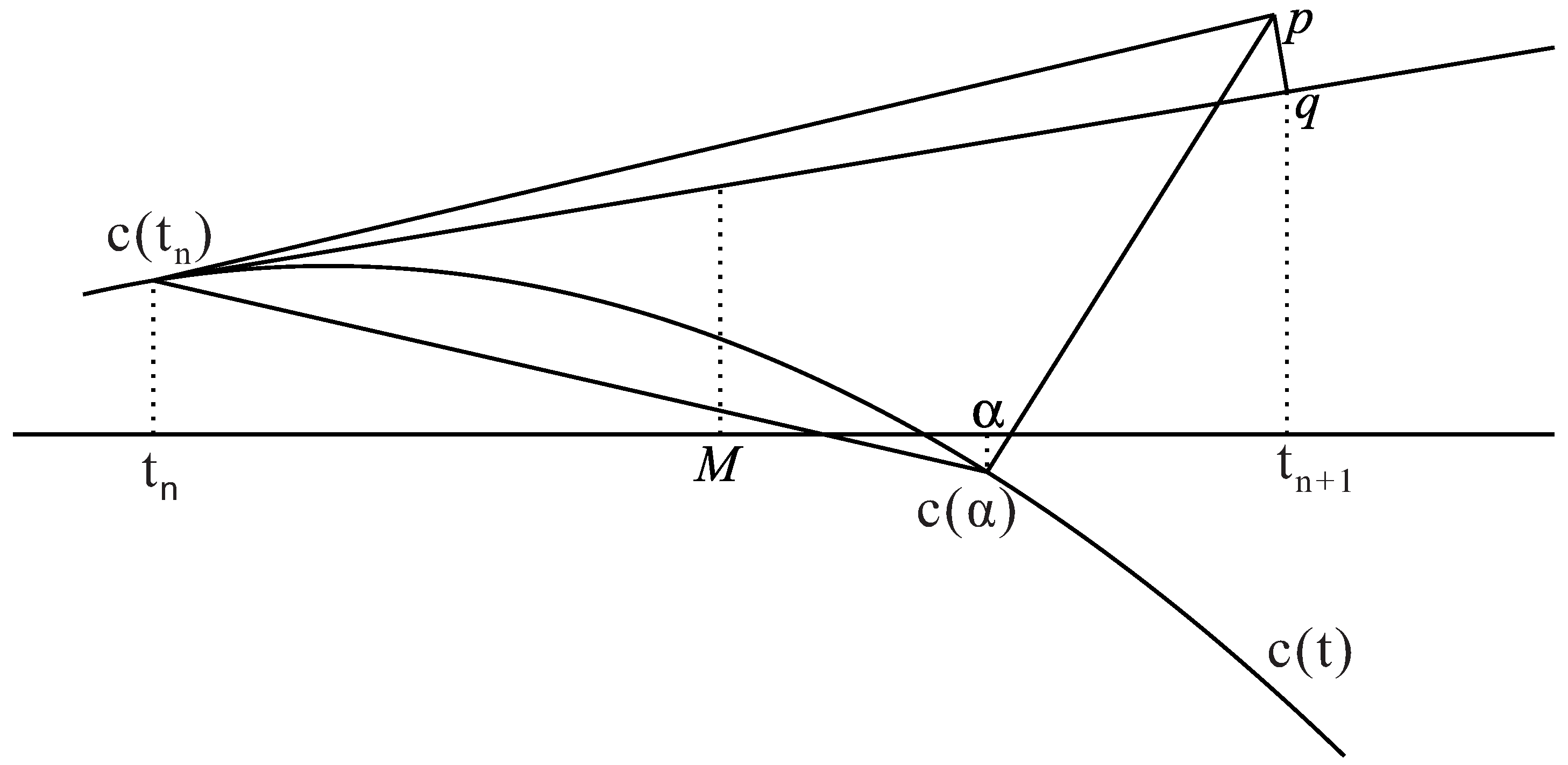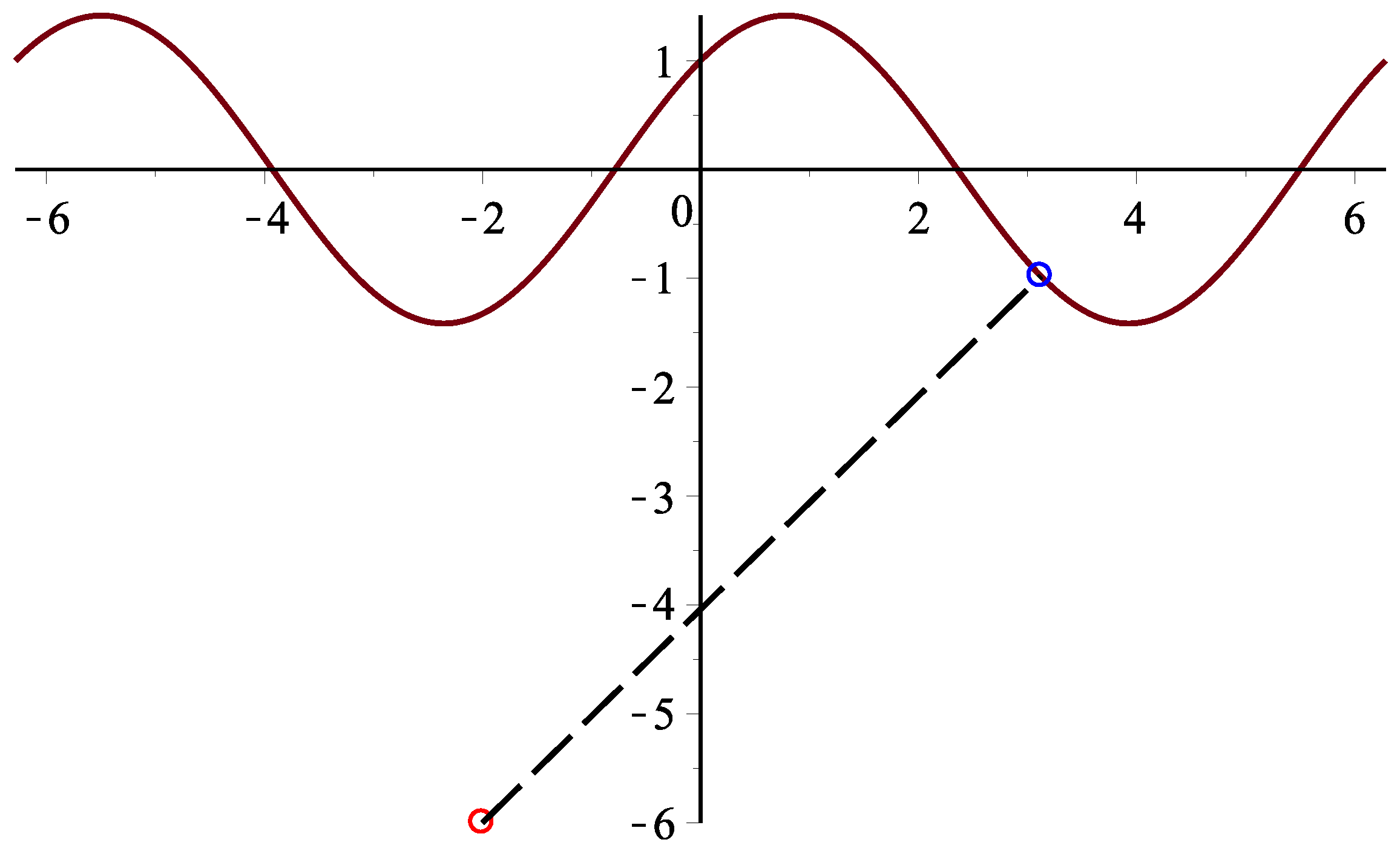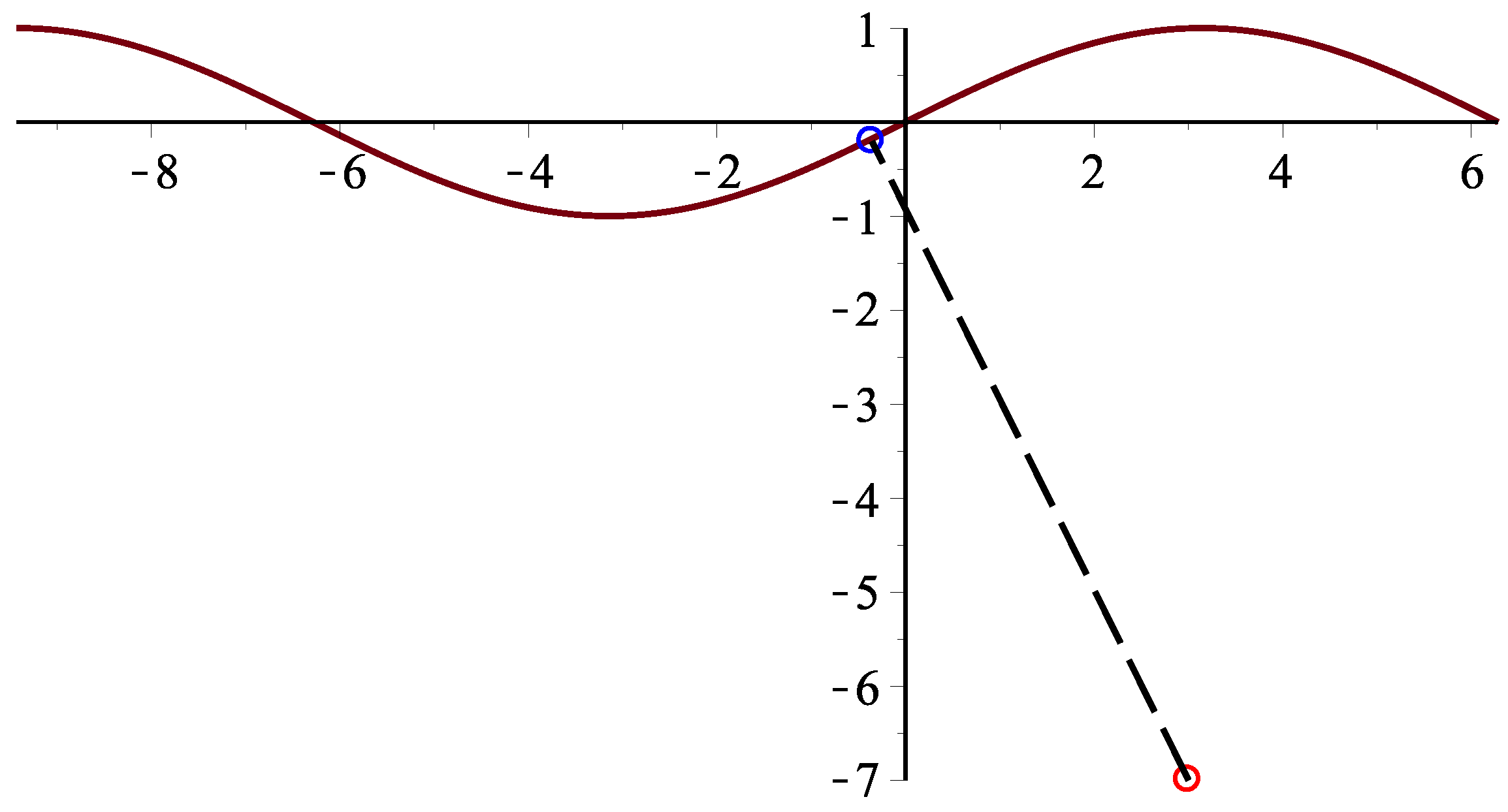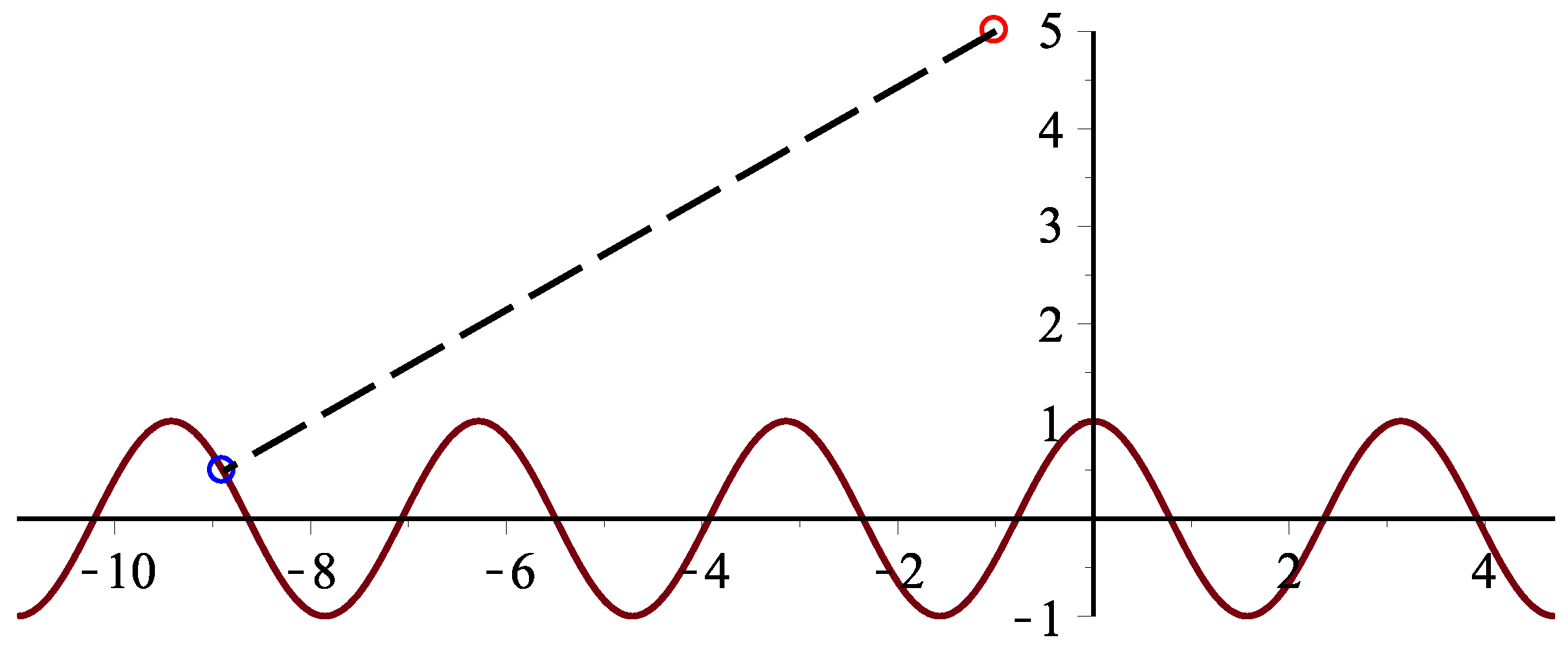In this part, we conduct a convergence analysis of iteration, presented in formula Equation (
5) in paper [
4]. We parameterize the curvature circle
such that it shares the same Taylor’s polynomial with the curve
c. Then this equality holds:
In
, we deal with the Equation (
1) using the method in the paper [
4] and get
, which yields the iterative formula
On the point projection problem, to verify that the algorithm defined by Equation (
2) (hereafter, the iterative method (2)) is quadratically convergent, we firstly derive the expression of the footpoint
q. The corresponding parameter is denoted as
when we orthogonally project a test point
p onto a parameter curve
, where
and
. By the definition of the minimum distance between a curve and a point, we will get the relation as follows
where
and normal vector
. The unit normal vector, the curvature, the relative curvature, and the radius of curvature circle of curve
can be expressed as follows, respectively,
Proof. Let
,
. Assume that
is a simple root of
, i.e.,
. For
, we take the Taylor’s expansion around
,
For the sake of simplicity, we use the Maple 18 package to calculate the Taylor’s expansion in the following way. Combine the derivation of Equations (
4)–(
20) with the orthogonal projection condition for Equation (
3) and Equation (
21)–(
26), and then simplify these equations, we acquire parameterized increment
as follows:
where
,
and
also satisfies the relationship
, which is transformed from the Equation (
3).
Substituting Equations (
28) into (
27), we can get the following error equation similar to that in [
32],
This implies that the algorithm defined by the iterative method (2) is quadratically convergent for the point projection problem. The proof is completed. ☐
Then, we will illustrate that the algorithm expressed by the iterative method (2) is third order convergent for the point inversion problem.
Proof. Firstly, we presents the interpretation for
Figure 1. Assume there exists a horizontal axis
t and planar parametric curve
. There are two points on the planar parametric curve
: the first point
with
on the horizontal axis, and the second point
is the corresponding orthogonal projection point of the test point
p onto the planar parametric curve
, where
is the corresponding parameter value on the horizontal axis. While, according to the iterative method (2), the line segment determined by point
p and point
and tangent line of planar parametric curve
at
are mutually perpendicular. The tangent line of the planar parametric curve
through point
will determine a footpoint
q, which is obtained by orthogonally projecting test point
p onto the tangent line of the curve
at
. The corresponding parametric value
of footpoint
q on the horizontal axis is obviously the next iterative value used by the iterative method (2). The corresponding parametric value of the middle point of the line segment determined by the point
and the footpoint
q is
M.
Secondly, we present the proof of Theorem 3. When the iterative method (2) only has one solution, it is independent of the initial value for point projection and inversion problem.
The proof method is similar to the ones in references [
33,
34,
35]. It is not difficult to show that the corresponding parameter of the first dimensional for the planar parametric curve on the two-dimensional horizontal plane is
t. When the iterative method (
2) begins to iterate, as the iterative parameter value satisfies the inequality relationship
, by the graphical demonstration, the parameter corresponding to the footpoint
q will be
. The middle point of point
and point
is
, which implies the relationship
. Additionally, because of
, there is an inequality relationship
. This result sufficiently yields the inequality
, namely, there is an iterative error expression
, where
. If
, then the proving method is similar to the case with
. Thus, for the planar parametric curve
, there is an iterative error expression
in the two-dimensional horizontal plane, namely, the iterative method (
2) is independent of the initial iterative parametric value.
Alternatively, we will present a descriptive proof that the iterative method (
2) is independent of the initial iterative parametric value. This proof method is also similar to the one in the literature [
33,
34,
35]. Suppose that the starting point lies on the left of
, then footpoint
q will lie on the right to the starting point, and hence
will be positive. By the iterative method (
2), the iterative sequence is expressed as follows,
where
If
, the sequence
is strictly monotonically increasing. If
, by at most three iterations, the sequence
converge to
. Notice that this iterative sequence performs like an attenuated pendulum and converges to
. Furthermore, when the starting point lies to the right of
, the convergence holds in the same way. To summarize, the footpoint
q depends on the test point
p all the time, rather than on the starting iteration point. So the iterative method (
2) is independent of the initial value. The proof is completed. ☐












